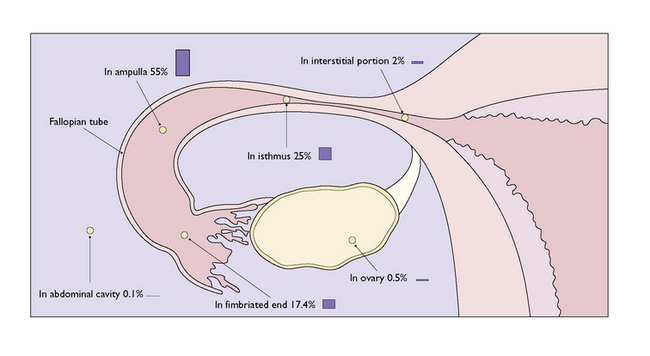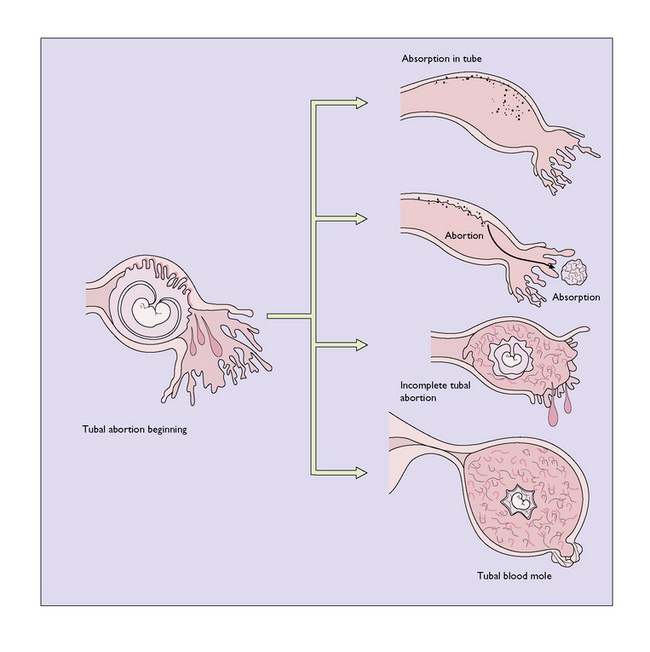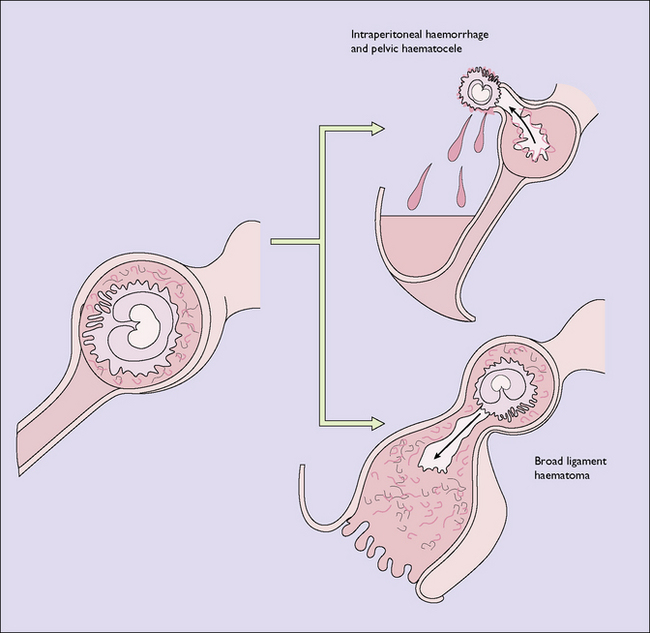Chapter 12 Extra-uterine pregnancy/ectopic gestation
OUTCOME FOR THE PREGNANCY
Tubal abortion
This occurs in 65% of cases and is the usual outcome in fimbrial and ampullary implantation (Fig. 12.2). Repeated small haemorrhages from the invaded area of the tubal wall detach the ovum, which dies and:
Tubal rupture
This occurs in 35% of cases and is more common when the implantation is in the isthmus. Whereas the rupture of the ampulla usually occurs between the sixth and 10th weeks, rupture of the isthmus occurs earlier, frequently at the time of the first missed period. The trophoblast burrows deeply and eventually erodes the serosal coat of the tube, the final break being sudden or gradual. Usually the ovum is extruded through the rent and bleeding continues. If the rupture is on the mesenteric side of the tube, a broad ligament haematoma will form (Fig. 12.3).






